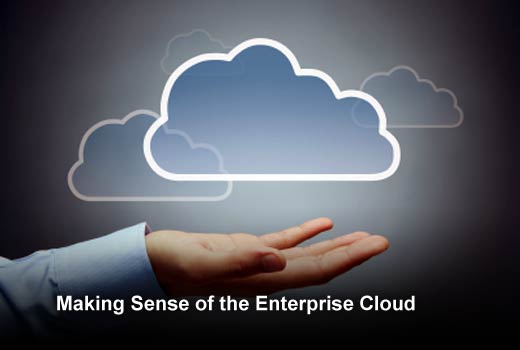Many organizations recognize the benefits of cloud computing, including potential cost efficiencies and greater scalability. But the cloud landscape is still relatively immature and must continue to evolve and grow before enterprises will be confident enough to host their most critical applications there.
While a promising technology, there are barriers to widespread adoption that are particularly challenging for the enterprise. In particular, large organizations need to know that their applications, once migrated to the cloud, will still function with the same level of availability they would expect from a robust in-house legacy data center.
Many enterprises have initiated their cloud journey by migrating only a few non-critical apps to the cloud. After learning from these initial forays into the cloud, and with new technology to ensure always-on availability in cloud environments, the time is ripe for organizations to begin migrating their most important applications. The truth is that no cloud migration is easy, but with new approaches to availability, the process can be more straightforward.
With this in mind, Jason Andersen, senior director of product management and marketing at Stratus Technologies, explores how enterprises can ease into the cloud without putting their most important applications at risk of a costly failure.
Making Sense of the Enterprise Cloud
Click through for five ways enterprises can prepare for migrating to the cloud, as identified by Jason Andersen, senior director of product management and marketing at Stratus Technologies.
Software-Defined Availability
Leverage Software-Defined Availability (SDA)
Software-defined availability makes it possible to host “always-on” apps in an enterprise-grade cloud – finally making the cloud a viable option to host a company’s most important applications. It’s important, however, not to take a one-size-fits-all approach to availability. Many applications require different levels of availability at different times.
With SDA, dynamic availability is possible – this lets you set different levels of availability at different times. For example, a financial application might only be critical at certain times during the quarter. Dynamic availability ensures the high availability you’ll need during critical periods, but allow you to scale back to a cheaper level of availability during other times.
The Best Options
Figure out which option works best for you.
All clouds are not the same – there are public, private and hybrid clouds to choose from. Which is the best? As with most IT questions, the answer is: it depends. The trick is to figure out exactly what your needs are, i.e., how your organization actually uses technology, what kind of flexibility it will need in the future, how it plans to grow and change to meet changing customer needs, and other key considerations. Then, match a solution that meets those needs at a reasonable cost. Organizations developing new and innovative applications might benefit from the flexibility of a private cloud, whereas that option may be too expensive for a more traditional enterprise that requires less flexibility.
Open Source
Consider open source technologies.
Technologies like OpenStack, Linux and KVM (Kernel-based Virtual Machines) reduce the “technology tax” on enterprises while providing the flexibility to build cloud environments using innovative best-of-breed solutions. There are serious benefits and savings to be had, but there are also additional challenges that come with open source technology. Some argue that OpenStack isn’t mature enough yet for enterprise-class clouds and that its lack of maturity can make it an unreliable solution. However, with the right approach to uptime – namely, software-defined availability – enterprises can ensure the applications they depend on will be there when needed.
Getting Help
Don’t be afraid to ask for help.
Amid the rush to embrace cloud, many enterprises are discovering that building their own private clouds is not so simple. Those lacking the right IT resources and expertise are taking a second look at outsourcing apps to cloud service providers. As a result, the industry has seen growth in the SaaS and IaaS models, which are creating opportunities for service providers savvy enough – and flexible enough – to meet the needs of enterprises that need applications to scale. To be successful, however, they need to think about how they will beat the established competition by adding value with enterprise-class services, such as high availability. The trick will be to provide this level of service without pricing themselves out of the market.
ROI
What about ROI?
One of the biggest challenges facing IT leaders is calculating the ROI on new or existing services, and this may be even more true when it comes to the cloud. It’s quite complicated to calculate cloud ROI due to its abstract nature. The perceived cost-benefits of moving to the cloud may be appealing, but many other investments and benefits must be considered. You’ll also need to think about the time that would be invested, organizational readiness, and what resources you have available. Be sure to factor all of these considerations into your ROI equation.








